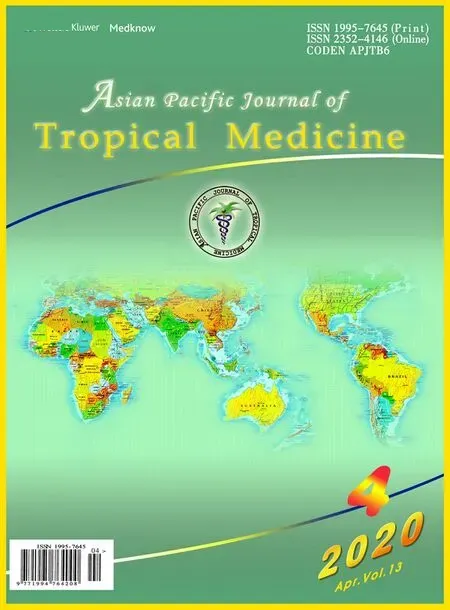COVID-19 international outbreak and the need for a suitable estimation model: A second-order polynomial equation with constant coefficients based on imported infected cases seems inadequate
2020-05-10HamidRezaNiazkarMajidNiazkar
Hamid Reza Niazkar, Majid Niazkar
1Student Research Committee, Gonabad University of Medical Sciences, Gonabad, Iran
2Department of Civil and Environmental Engineering, Shiraz University, Shiraz, Iran
COVID-19 due to infections with the 2019 novel coronavirus (SARS-CoV-2) was first reported in Wuhan, Hubei Province, China in December 2019. Up to 2 March 2020, it has already spread to more than 55 countries, infected more than 85 000 individuals, and yielded to about 3 000 death cases[1]. Due to the vigorous outbreak of COVID-19, it has become a global concern. Further management and controlling of this worldwide threat inevitably relies on the preparedness and precise risk assessment of the future, particularly in countries that new cases have been observed. In this regard, estimation of new probable confirmed and death cases in the near future is crucial to health care systems of each country. As a result, some researches have been conducted to address this new concern[2-4].
In one of the most recent studies focusing on the first month of COVID-19 outbreak in Thailand, Sookaromdee and Wiwanitkit[2] proposed a second-order polynomial function, which relates imported infected cases (I) with time (t). The relation is given as I=2AT2+AT+C, where A is the acceleration rate of disease spreading and C is a constant. This relation was derived by integrating V=AT, where V is the average velocity of the spreading disease[2]. The authors sincerely appreciate Sookaromdee and Wiwanitkit for their valuable contribution. However, several issues are presented in accordance with their mathematical model:
First of all, COVID-19 is highly contagious, and infected individuals can spread the disease during the incubation period, which is estimated to be about 2-14 days[5]. Due to the incubation period of COVID-19, imported infected cases may underestimate the outbreak, and may not be a suitable index for prediction purposes. In contrast, a forecasting model based on either total confirmed or death cases may give more accurate estimations.
In the suggested model by Sookaromdee and Wiwanitkit[2], it was basically assumed that the spreading acceleration rate of COVID-19 outbreak is constant in respect with time. This assumption may not be compatible with the natural course of the outbreak. According to COVID-19 outbreak reported from 20 January to 24 February 2020 in Thailand[1], the accumulative number of confirmed cases not only has a highly nonlinear relationship with time but also demonstrates a repetitive pattern comprising of a steep rise followed by a plateau, as shown in Figure 1.

Figure 1. Temporal variation of accumulative confirmed cases due to COVID-19 in Thailand from 20 January to 29 February 2020[1].
The integration of V=AT, with respect to time gives I=0.5AT2+C. However, it was reported to be I=2AT2+AT+C. In addition, differentiation of the latter relation provides V=4AT+A, which is different from V=AT. This incompatibility raises concerns regarding the reliability of their prediction model.
Finally, as the data of COVID-19 outbreak with larger time spans have become available, models with much more rigorous predictions can be developed to help infected countries dealing with this outbreak.
Conflict of interest statement
The authors declare that there is no conflict of interest.
Acknowledgements
The authors would like to thank the World Health Organization for providing the online data of COVID-19 outbreak.
杂志排行
Asian Pacific Journal of Tropical Medicine的其它文章
- Epitope finding in 2019 novel coronavirus (2019-nCoV): The first world report
- Antimalarial activity of the aqueous extract of Euphorbia cordifolia Elliot in Plasmodium berghei-infected mice
- Epidemiological, molecular characterization and risk factors of human brucellosis in Iran
- Provincial clustering of malaria in Iran between 2005 and 2014
- Expert consensus guidelines on clinical use of Xiyanping injection for acute infectious diseases
- Crimean-Congo hemorrhagic fever: etiology, diagnosis, management and potential alternative therapy
